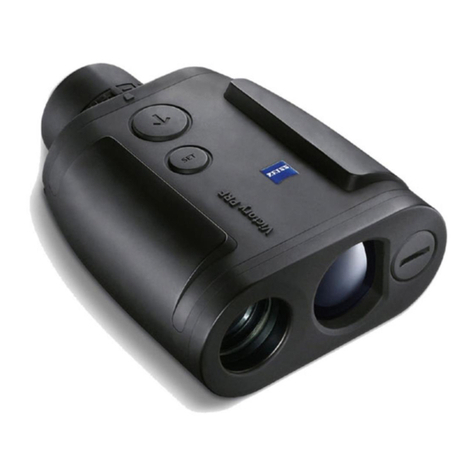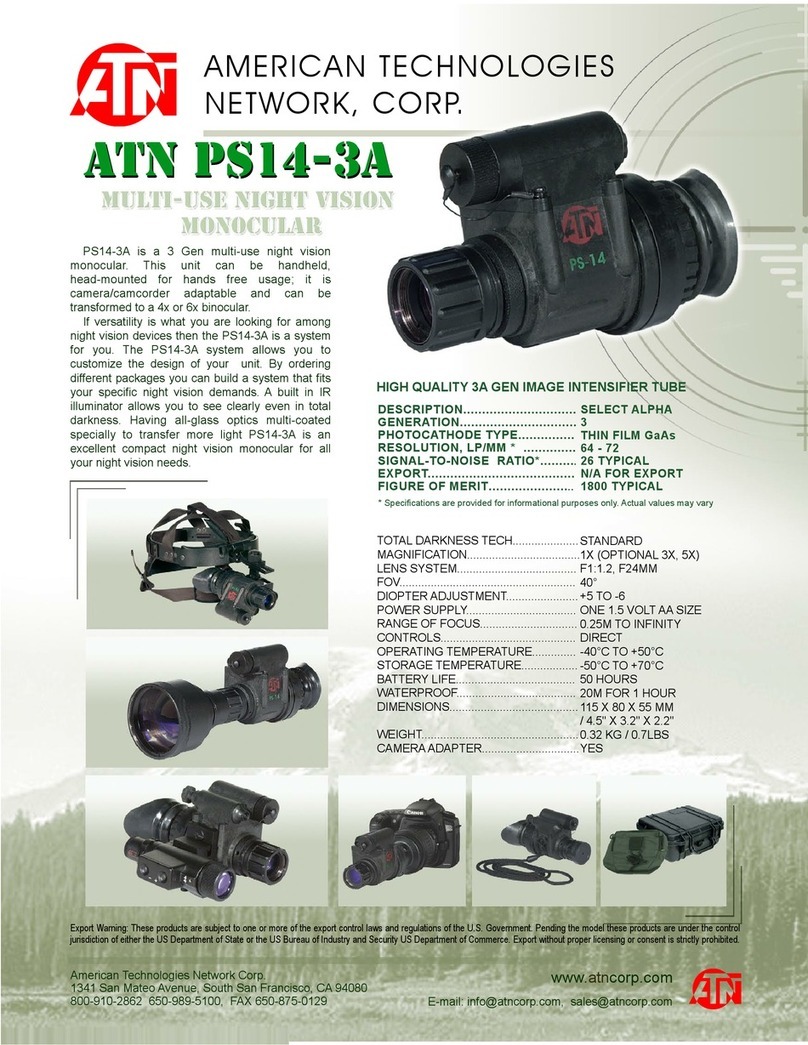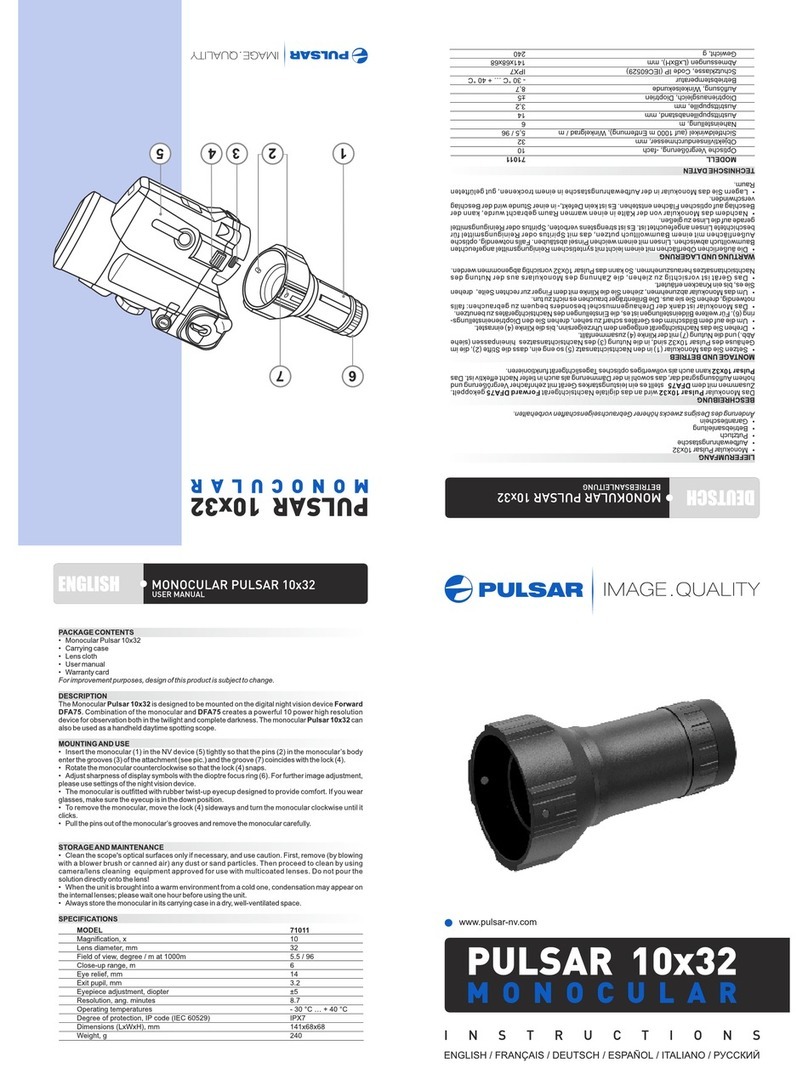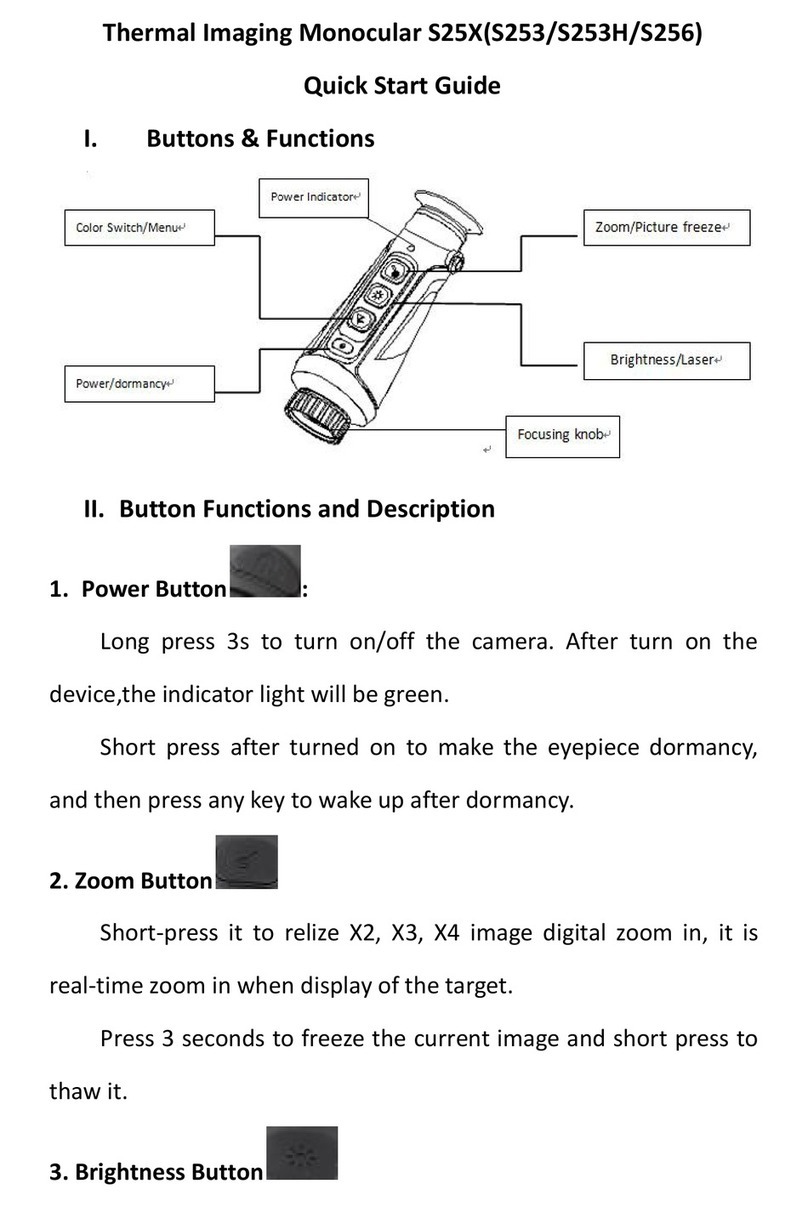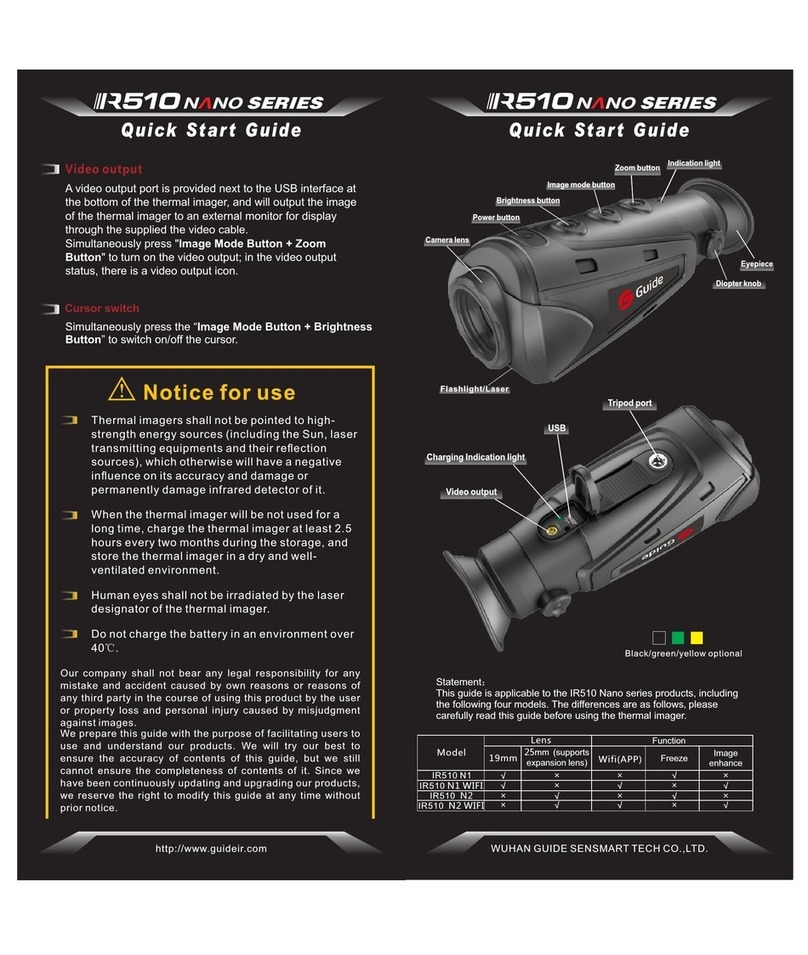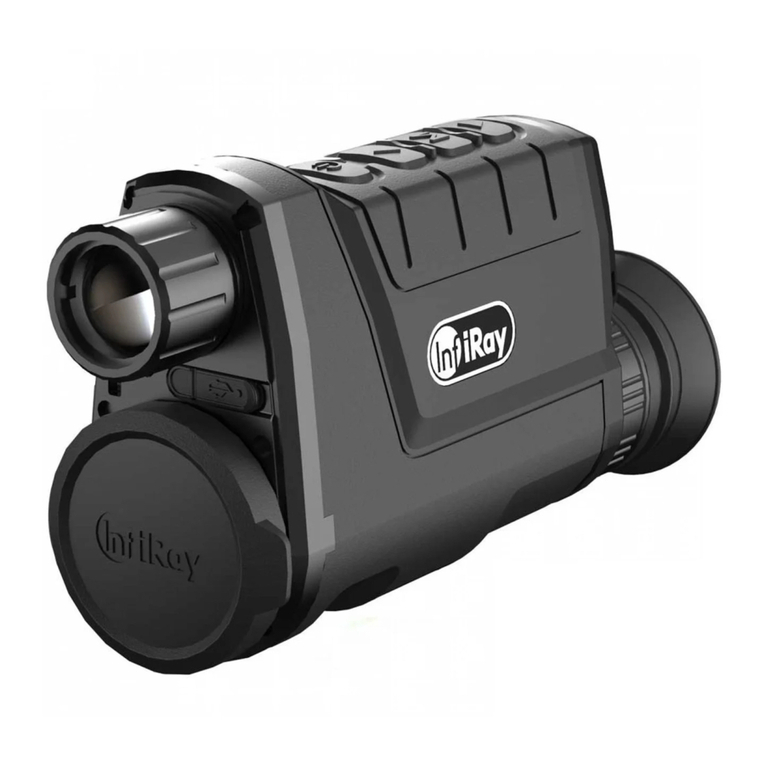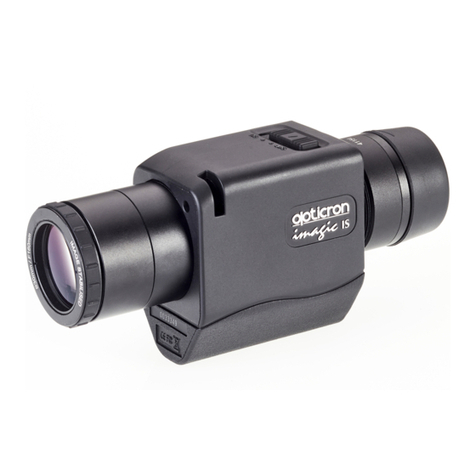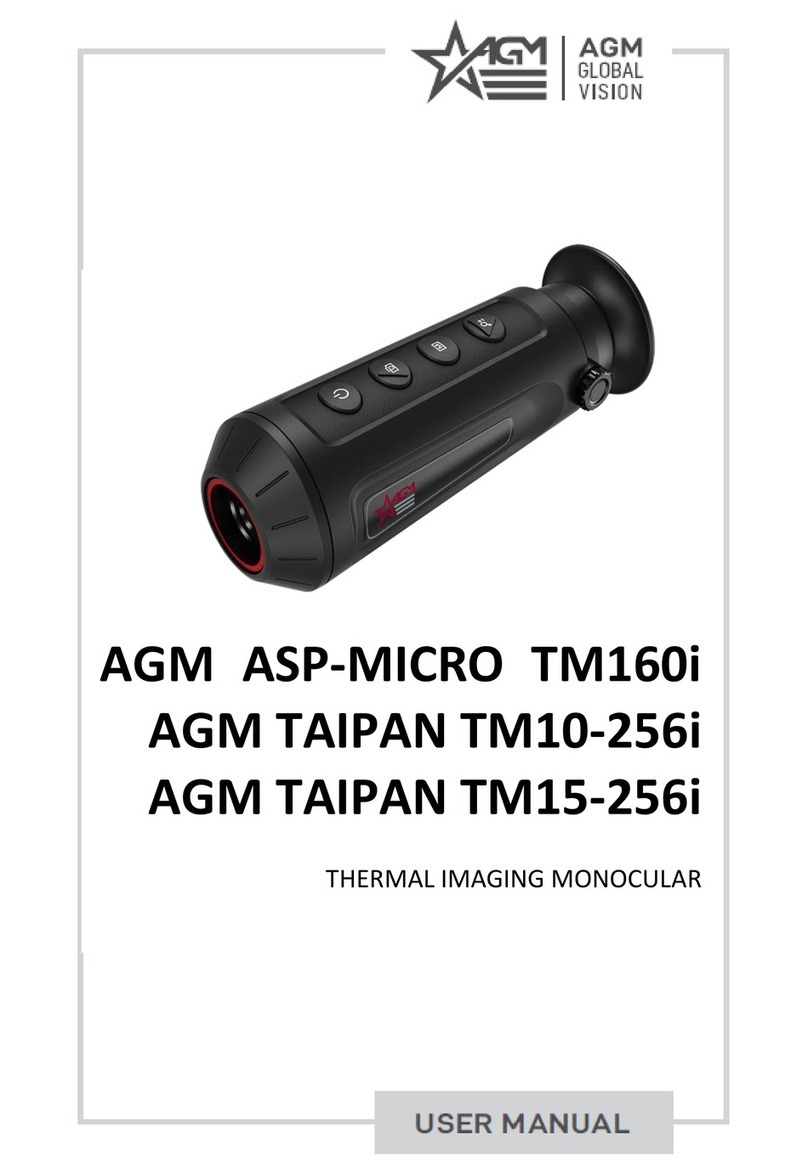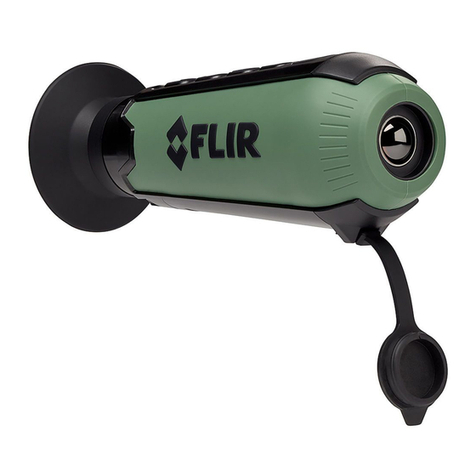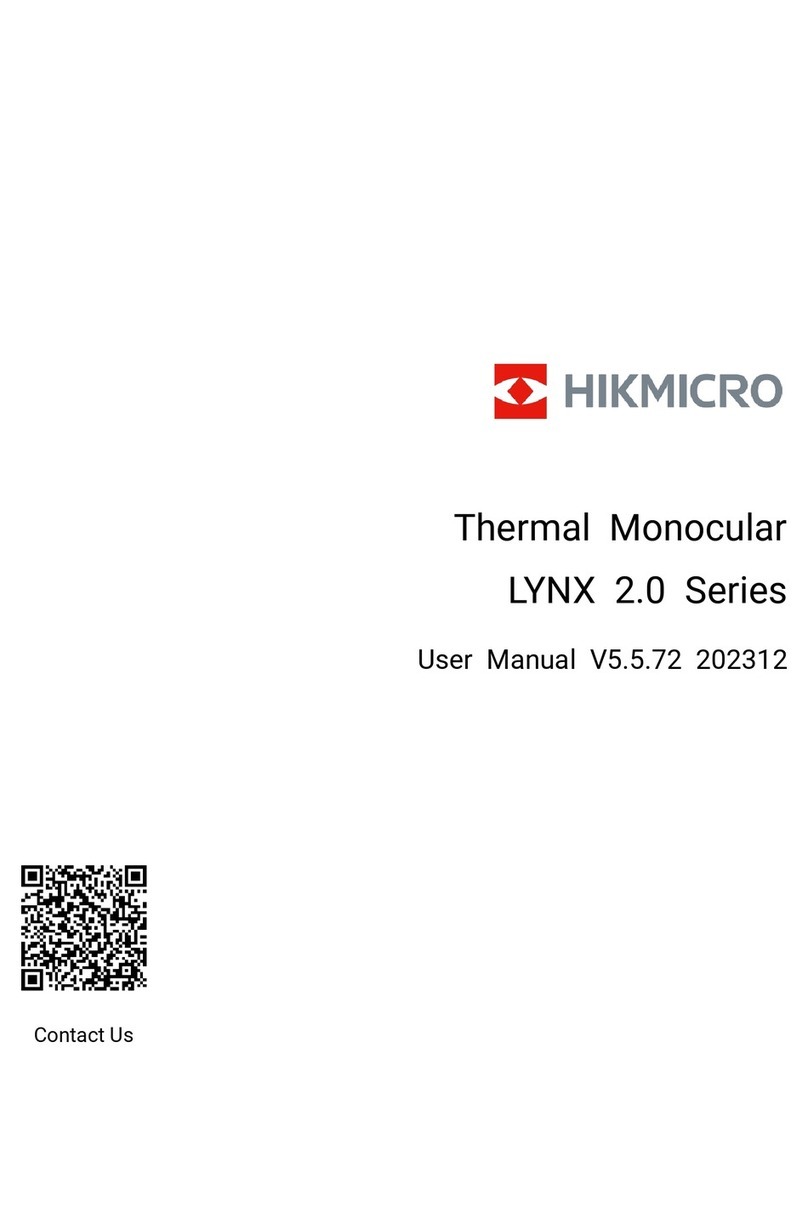
8lLower left corner--Time and datelLower right corner--Video output icon (on). The color of the battery icon represents the current battery level. When the battery icon is shown in red, it indicates that the battery is low. Please charge it in time.CALIBRATING THE SENSORWhen the image is degraded or uneven, it can be improved by calibration. Calibration enables the detector temperature background to be equalized and defects in the image to be eliminated.There are two calibration modes: manual calibration (M) and automatic calibration (A).Select the required mode in the CALIBRATION section of the MAIN MENU.lA mode (automatic).The device is calibrated autonomously by the software algorithm. The lens cap need not be secured (the sensor is closed by an internal shutter).
15Shut DownlAfter using the device, press and hold the Power (3) button for 3 seconds. The shutdown countdown screen will appear. lWhen the countdown from 3 to 0 is completed as indicated by the countdown icon, the device is powered off. Then release the button. The display is off, the indicator is off, and the device is shut down.StandbylThe standby mode can let the device into a sleep state (turn off the display screen, the main chip is standby).lDuring use, press the Power (3) button briefly, which allows it to be quickly turned off, if necessary. lPress the Power (3) button again to wake up the device.HOME SCREENWhen the device booted up, the home screen shows upon. There is some general information shown on the interface. Detail as follows:lUpper left corner--Color palette, magnification, calibration mode, Wi-Fi (on), Ultraclear mode (on), Microphone (on), Automatic screen off (on), lUpper right corner--Battery level314
